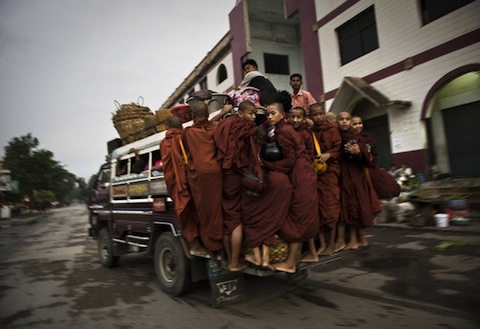
I should have mentioned long ago that noted Microkhan ally Nathan Thornburgh has launched a new project near-and-dear to my heart: Roads & Kingdoms, a site that operates under the hard-to-resist motto “Journalism, travel, food, murder, music.” The first several weeks’ worth of posts have focused exclusively on Burma, where Nathan and his co-creator traveled late last year. To their great credit, they made it all the way up to Myitkyina, a scrappy town that makes an important cameo in Now the Hell Will Start. Their photos and stories from up that way are pretty dang awesome.
But Roads & Kingdoms isn’t just about on-the-ground reporting; Nathan and his crew also delve into the data on occasion, such as in this great riff on the lethality of Burma’s highways and byways. The actuary in me loved this bit:
The dry genius of the ADB-ASEAN cost estimate is that it includes estimates for grief and human suffering in the aftermath of an accident. That’s $1,800 in societal grief for every death, $842 for a serious injury accident, $8.28 for a slight injury accident.
I keep on wondering how they tacked on that twenty-eight cents to the minory-injury estimate. And, more important, the factors that affect how those sorts of figures translate to more developed nations. Do the bean counters assume that grief is greater in places where violent death is rarer? Or are assumptions not part of the process here, and there is some sort of griefometer that automates the gathering of data?


shothotbot // Jan 5, 2012 at 11:44 am
I noticed this review today:
http://www.ft.com/intl/cms/s/0/2e7857a0-2a6d-11e1-8f04-00144feabdc0.html#axzz1ibRvOwuq
Brendan I. Koerner // Jan 5, 2012 at 1:26 pm
@shothotbot: Thank you, v. interesting. I can see why it would be hard to make these calculations in less developed countries, since there is less data available on which to build the models. As I’ve posted here before, I believe one of the key datapoints these models use is willingness to pay (WTP) for devices and services meant to protect life (e.g. smoke alarms). But in countries with low incomes, households don’t really have the option to purchase such potential lifesavers.